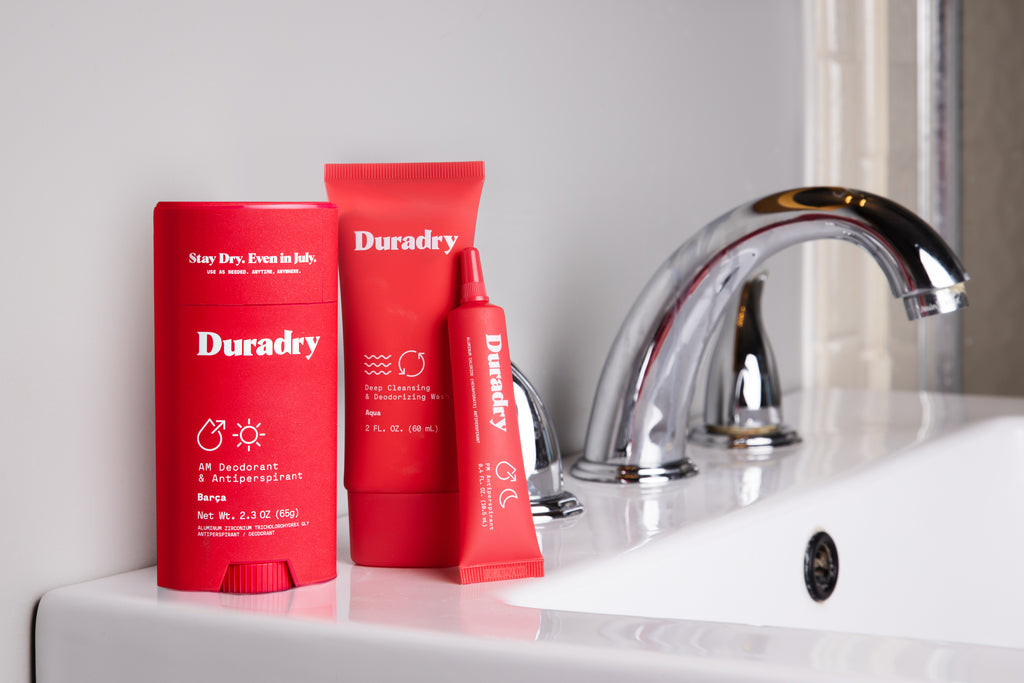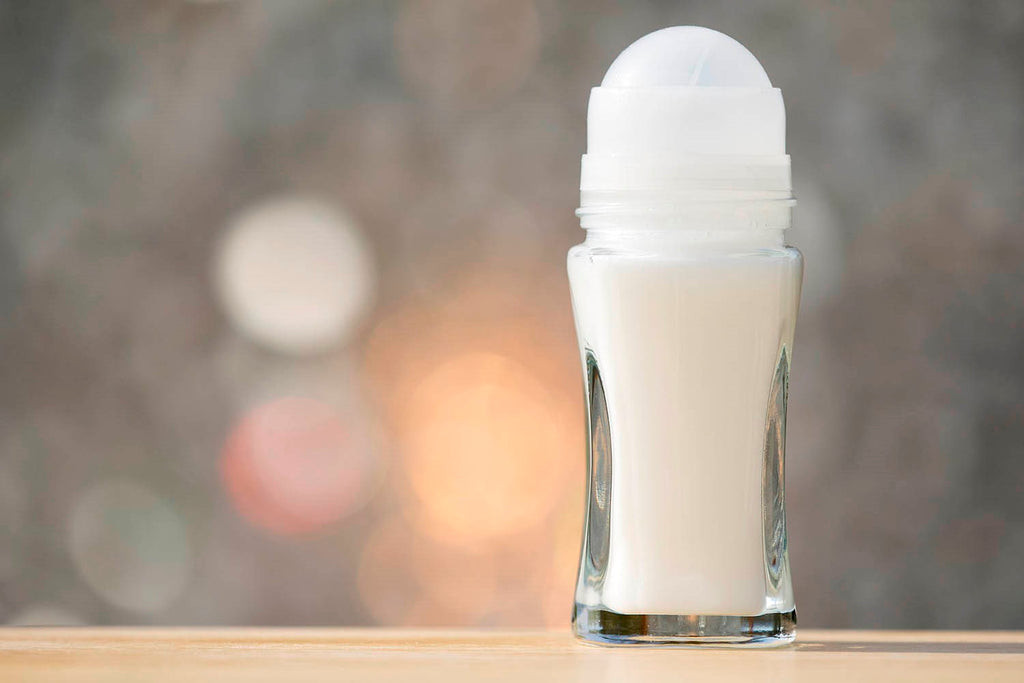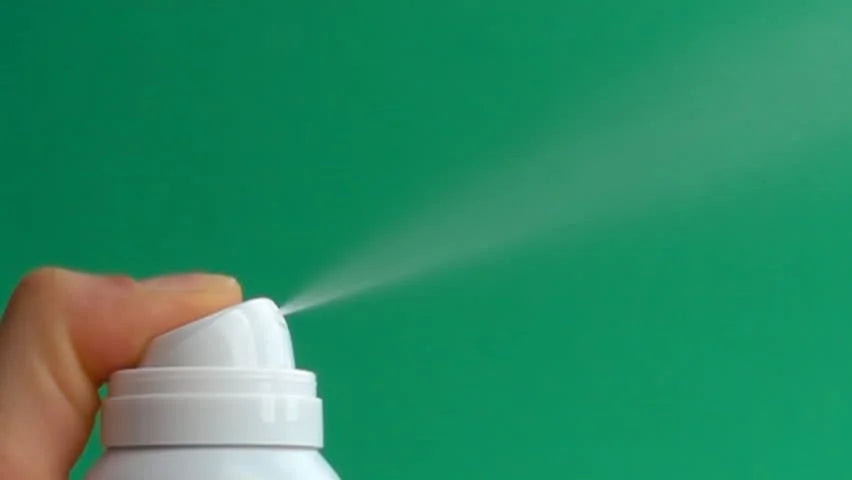Navigating airport security can be tricky, especially when it comes to knowing what you can and can’t bring on a plane. When it comes to toiletries, you may wonder “Is Deodorant Considered A Liquid When Flying?” Flyermedia.net is here to clear up any confusion, so you can breeze through security with confidence and stay fresh on your journey. Whether you prefer solid stick, roll-on, spray, or even powdered deodorant, understanding the regulations can save you time and hassle. This guide offers clear answers and practical tips for traveling with your preferred hygiene products.
1. Can I Bring Deodorant on a Plane? Understanding the Rules
Yes, you can bring deodorant on a plane, but the type of deodorant matters. Solid stick deodorants are generally permitted in both carry-on and checked luggage without restrictions. However, liquid, gel, or aerosol deodorants are subject to the Transportation Security Administration (TSA) 3-1-1 rule for carry-ons.
This means:
- Liquids, gels, aerosols, creams, and pastes must be in travel-sized containers that are 3.4 ounces (100 milliliters) or less per item.
- All items must fit into one quart-sized, clear plastic zip-top bag.
- Each passenger is limited to one quart-sized bag of liquids, gels, aerosols, creams, and pastes.
For checked luggage, there are no restrictions on the size of solid deodorant, but liquid, gel, and aerosol deodorants are still subject to size and quantity limitations. It’s always best to check with the airline or TSA for specific regulations, especially concerning aerosols, as some may have further restrictions due to safety concerns.
2. Deodorant Types and TSA Regulations: A Detailed Breakdown
Understanding how different types of deodorant are classified by the TSA is crucial for smooth travels.
- Solid Stick Deodorant: Not considered a liquid, gel, or aerosol. Allowed in carry-on and checked baggage without quantity limitations.
 Solid Stick Deodorant
Solid Stick Deodorant - Roll-On Deodorant: Typically considered a liquid or gel. Must adhere to the TSA 3-1-1 rule for carry-ons (3.4 oz or less, placed in a quart-sized bag). No quantity limitations in checked baggage.
 Roll-on deodorant
Roll-on deodorant - Aerosol Deodorant: Classified as an aerosol. Must comply with the TSA 3-1-1 rule for carry-ons (3.4 oz or less, placed in a quart-sized bag). In checked baggage, larger quantities may be allowed, but check specific airline regulations.
 Aerosol and spray deodorant
Aerosol and spray deodorant - Powder Deodorant: Powdered deodorant is not considered a liquid. There are no rule in place about bringing them onto planes, so you are allowed to carry powdered deodorants in carry-on baggage and checked baggage. However, the TSA recommends that you don’t pack a powdered deodorant that is over 12 ounces.
Here’s a summary table for quick reference:
| Deodorant Type | Carry-On | Checked Baggage |
|---|---|---|
| Solid Stick | Allowed, no quantity limitations | Allowed, no quantity limitations |
| Roll-On | Must be 3.4 oz (100ml) or less, placed in a quart-sized bag | Allowed, no quantity limitations |
| Aerosol | Must be 3.4 oz (100ml) or less, placed in a quart-sized bag | Larger quantities may be allowed; check airline regulations |
| Powdered Deodorant | Allowed, but TSA recommends that you don’t pack a powdered deodorant that is over 12 ounces | Allowed |
3. Navigating TSA’s 3-1-1 Rule: A Step-by-Step Guide
The TSA’s 3-1-1 rule is a crucial regulation for anyone flying with liquids, gels, or aerosols in their carry-on luggage. This rule dictates the quantity and packaging of these items to ensure aviation safety.
- 3.4 ounces (100 milliliters): This is the maximum size each liquid, gel, or aerosol container can be. Containers larger than this, even if only partially full, are not permitted in carry-ons.
- 1 quart-sized bag: All your liquid, gel, and aerosol items must fit comfortably into one clear, quart-sized plastic zip-top bag. The bag should be able to close properly.
- 1 bag per passenger: Each traveler is allowed only one quart-sized bag. This limit is strictly enforced to streamline the screening process and reduce potential threats.
Packing Your Liquids, Gels, and Aerosols:
- Gather Your Items: Collect all your travel-sized liquids, gels, and aerosols you intend to bring in your carry-on. This includes deodorant, shampoo, conditioner, toothpaste, and any other similar items.
- Check Container Sizes: Ensure that each container is 3.4 ounces (100 milliliters) or less. You can find the size marked on the container itself. If not, transfer the product to a travel-sized container clearly labeled with its volume.
- Place Items in the Quart-Sized Bag: Arrange the containers in a single, transparent, quart-sized zip-top bag. Ensure the bag can be sealed without any containers sticking out.
- Keep the Bag Accessible: When going through airport security, remove the quart-sized bag from your carry-on and place it in a separate bin for screening. This helps TSA officers quickly inspect the items.
Tips for Complying with the 3-1-1 Rule:
- Use Travel-Sized Containers: Purchase travel-sized versions of your favorite products or buy empty travel-sized containers to fill with your preferred brands.
- Plan Ahead: Pack your liquids, gels, and aerosols in advance to avoid rushing at the last minute. This gives you time to double-check container sizes and ensure everything fits properly.
- Consider Solid Alternatives: Opt for solid versions of toiletries whenever possible. Solid shampoo bars, conditioners, and deodorants don’t fall under the 3-1-1 rule.
- Be Prepared to Discard: If you have items that don’t meet the requirements, be prepared to discard them. It’s better to lose a small item than miss your flight.
- Inform Yourself: Stay updated on the latest TSA regulations, as rules can change. The TSA website provides detailed information and FAQs.
4. Why is Deodorant a Security Risk? Addressing Concerns
While it may seem odd that deodorant is subject to security scrutiny, the reason for these guidelines is rooted in the need to prevent potential threats. Security officials are concerned about explosives or other dangerous substances being concealed within personal care products like deodorant.
The primary concern is the potential for:
- Concealing Explosives: Liquids, gels, and aerosols can be used to hide explosive materials. By limiting the quantity and requiring these items to be placed in clear bags, TSA can better identify potentially dangerous substances.
- Chemical Reactions: Certain combinations of chemicals found in personal care products could, under specific conditions, create a hazard. Restricting the quantity of these items reduces the risk of such reactions occurring on board.
- Maintaining Security Protocols: Standardized rules and procedures help streamline the security screening process. Consistent guidelines for all passengers make it easier for TSA officers to identify and address potential threats efficiently.
While the vast majority of deodorants pose no threat, these regulations are in place to ensure the safety and security of all passengers. By adhering to the 3-1-1 rule and other TSA guidelines, travelers help maintain a safe environment for air travel.
5. Alternatives to Bringing Deodorant: Travel-Friendly Options
If you prefer not to deal with the restrictions on liquid, gel, or aerosol deodorants, several travel-friendly alternatives can keep you fresh on your journey.
Solid Deodorant Sticks
Solid deodorant sticks are a convenient and regulation-free option. Since they are not classified as liquids, gels, or aerosols, you can pack them in your carry-on or checked luggage without any quantity restrictions.
Pros:
- No TSA restrictions
- Easy to pack and use
- Available in a variety of scents and formulations
Cons:
- May not be preferred by everyone
- Can sometimes leave residue on clothing
Deodorant Wipes
Deodorant wipes are individually packaged towelettes infused with deodorant. They are a great way to freshen up on the go, and they don’t fall under the TSA’s liquid restrictions.
Pros:
- TSA-friendly
- Convenient and portable
- Ideal for long flights or travel days
Cons:
- Single-use, so not the most eco-friendly option
- May not provide as much long-lasting protection as other deodorants
Crystal Deodorants
Crystal deodorants are made from natural mineral salts that inhibit the growth of odor-causing bacteria. They come in solid form and are not subject to liquid restrictions.
Pros:
- TSA-friendly
- Natural and hypoallergenic
- Long-lasting
Cons:
- May not be as effective for heavy sweating
- Requires wetting before application
Buying at Your Destination
Another option is to simply buy deodorant when you arrive at your destination. This eliminates the need to pack it altogether and ensures you comply with all regulations.
Pros:
- No need to pack deodorant
- Avoids any potential issues with TSA
- Opportunity to try new brands
Cons:
- May not find your preferred brand
- Requires making a purchase upon arrival
6. What Are Alternative Methods of Bringing Liquid Deodorants to Your Destination?
There’s no question that deodorant is a necessary item for travelers. But because of the restrictions placed on liquids and aerosols, bringing deodorant on a plane can be a challenge. Maybe your specific brand of aerosol, medicated, or gel deodorant is absolutely necessary to pack for your destination. Thankfully, you’re not out of luck. You may carry your deodorant with you in a variety of ways through the airport:
1. Carry a Doctor’s Note
If your deodorant is prescribed, it’s legal for you to carry larger amounts than the standard 3.4 ounces.
When you head to the airport, make sure to keep a copy of your prescription or a valid doctor’s note on hand. If you’re stopped during the bag checking process, just proffer the note to show to a TSA official.
It’s recommended that you Mention that your deodorant is medically necessary, then take it out of your carry-on and in a separate bin.
If you don’t have a doctors note or want to check a bag you have other options to consider.
2. Buy Your Deodorant After The TSA Security Check
There are a few different ways to get around the TSA security check for deodorants. The most popular way is to buy your deodorant after the security checkpoint has been completed. You will be able to carry aerosol spray cans, travel-sized liquids, and gels in your carry-on bag without having them checked.
Make sure that you read all of the guidelines before traveling so that you know exactly what you are allowed to bring on board!
3. Buy a Travel Size Deodorant
Travel size hygiene products have become increasingly popular as TSA restrictions have grown more punitive. Just head down to your local grocery store to get TSA approved travel-sized antiperspirant.
7. Tips for Packing Deodorant: Ensuring a Smooth Security Check
To ensure a smooth security check when traveling with deodorant, keep these tips in mind:
- Know the Rules: Familiarize yourself with the TSA’s regulations regarding liquids, gels, and aerosols.
- Use Clear Bags: Pack your liquid, gel, and aerosol deodorants in a clear, quart-sized zip-top bag.
- Check Container Sizes: Make sure each container is 3.4 ounces (100 milliliters) or less.
- Declare at Security: When going through security, remove the bag from your carry-on and place it in a separate bin.
- Consider Solid Options: Opt for solid deodorant sticks or other TSA-friendly alternatives.
- Pack in Checked Baggage: If possible, pack larger containers of deodorant in your checked baggage to avoid restrictions.
- Stay Informed: Check the TSA website or with your airline for any updates or changes to the regulations.
8. What Happens If Your Deodorant Doesn’t Meet TSA Standards?
If your deodorant doesn’t meet TSA standards, you have a few options:
- Discard the Item: You can choose to discard the item at the security checkpoint. This is often the easiest and quickest solution.
- Pack in Checked Baggage: If you have checked baggage, you can ask the TSA officer if you can exit security to place the item in your checked bag.
- Mail the Item: Some airports have mailing services where you can mail the item to your destination or back home.
- Give It Away: If you have a travel companion who can use the item, you can give it to them.
It’s important to be polite and cooperative with TSA officers. They are there to enforce the rules and ensure everyone’s safety.
9. Traveling with Medicated Deodorant: Special Considerations
If you use a medicated deodorant prescribed by a doctor, you may be able to bring larger quantities than the standard 3.4 ounces allowed for carry-ons. However, you’ll need to take a few extra steps:
- Documentation: Carry a copy of your prescription or a letter from your doctor stating that the deodorant is medically necessary.
- Inform TSA: When going through security, inform the TSA officer that you have a medically necessary item and show them your documentation.
- Separate Screening: Be prepared for additional screening of the item. The TSA officer may need to inspect it more closely.
The TSA has specific guidelines for passengers with medical conditions and disabilities. You can find more information on their website.
10. Frequently Asked Questions (FAQs) About Flying With Deodorant
1. Is solid deodorant considered a liquid by TSA?
No, solid stick deodorant is not considered a liquid, gel, or aerosol and is allowed in both carry-on and checked baggage without quantity limitations.
2. Can I bring a full-size aerosol deodorant in my checked bag?
Yes, you can bring a full-size aerosol deodorant in your checked bag. However, some airlines may have specific restrictions on the quantity of aerosols allowed, so it’s best to check with your airline beforehand.
3. What happens if my roll-on deodorant is slightly over 3.4 ounces?
If your roll-on deodorant is slightly over 3.4 ounces, you will likely be asked to discard it at the security checkpoint. It’s best to transfer the deodorant to a travel-sized container or pack it in your checked baggage.
4. Can I bring deodorant wipes in my carry-on?
Yes, deodorant wipes are allowed in your carry-on without any restrictions, as they are not considered liquids, gels, or aerosols.
5. Do crystal deodorants need to be in a clear plastic bag?
No, crystal deodorants do not need to be in a clear plastic bag, as they are not subject to the TSA’s liquid restrictions.
6. Can I buy deodorant after going through security?
Yes, you can buy deodorant after going through security at many airport shops. This is a convenient option if you prefer not to pack it.
7. What if my medicated deodorant is not clearly labeled?
If your medicated deodorant is not clearly labeled, it’s best to carry a copy of your prescription or a letter from your doctor to avoid any issues at security.
8. Are there any restrictions on deodorant in international flights?
The rules for international flights are generally the same as for domestic flights. However, it’s always a good idea to check with the specific airline and airport for any additional restrictions.
9. Can TSA make an exception for essential hygiene products?
While TSA officers have some discretion, they generally adhere strictly to the 3-1-1 rule. It’s best to comply with the regulations to avoid any issues.
10. Where can I find the most up-to-date information on TSA regulations?
You can find the most up-to-date information on TSA regulations on the TSA website or by contacting the TSA directly.
By following these tips and guidelines, you can confidently pack your deodorant and breeze through airport security without any stress. Safe travels from flyermedia.net!
Whether you’re a student pilot at Embry-Riddle Aeronautical University preparing for your first solo flight or a seasoned aviation enthusiast attending the annual Sun ‘n Fun Aerospace Expo, flyermedia.net has all the information you need to stay informed and connected in the world of aviation.
If you’re seeking comprehensive information on flight training, aviation news, or career opportunities, visit flyermedia.net today. Explore our resources and take the first step toward achieving your aviation dreams.
Address: 600 S Clyde Morris Blvd, Daytona Beach, FL 32114, United States. Phone: +1 (386) 226-6000.
